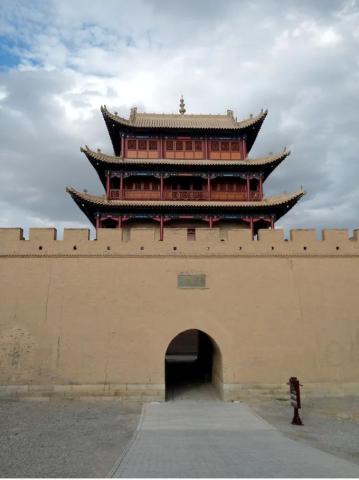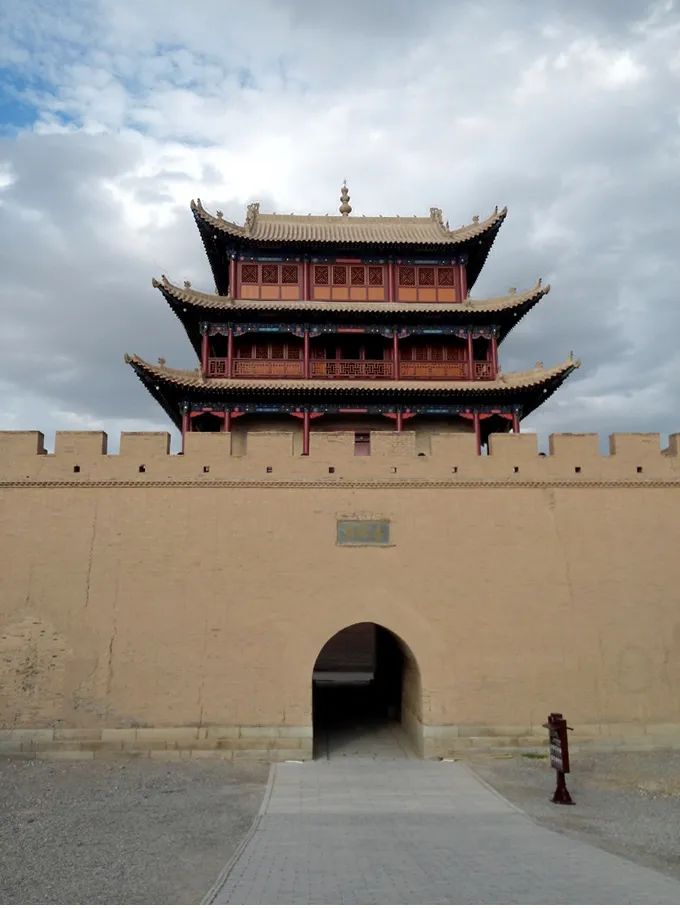
"When you arrive at Jiayuguan, you will never stop crying. Looking ahead, you will see the Gobi Desert; looking back, you will see the Gate of Hell; looking up, you will see the gray sky." This is a proverb circulated in Jiayuguan, which vividly expresses the harsh ecological environment of Jiayuguan. Maybe you have heard of Jiayuguan and know that it is "the most majestic pass in the world", but few people understand why Jiayuguan is called "the most majestic pass in the world".
story
Jiayuguan: the most majestic pass in the world
Why is there Jiayuguan? Jiayuguan was built in the fifth year of Hongwu in the Ming Dynasty (1372). At that time, Turpan in the east was becoming increasingly powerful and often led troops to invade cities in the Hexi Corridor. The Jiayu Pass was a must-pass. After a battle, General Feng Sheng, the general who conquered the captives, discovered that Jiayuguan was a very good pass for building defense on his way home, so he chose the site to build the pass here. Jiayuguan consists of the inner city, outer city, Luocheng, Wengcheng, moat and the Great Wall on the north and south wings, with a total length of about 60 kilometers. The Great Wall is dotted with platforms, piers, and forts. It consists of three lines of defense: the inner city, the outer city, and the moat. They overlap and defend, forming a defense of one fire for five miles, one pier for ten miles, one fort for thirty miles, and one city for one hundred miles. system. At that time, it played an important role in ensuring the security of the Hexi region.

Why is Jiayuguan called the most majestic pass in the world? This starts with the geographical location of Jiayuguan in the Hexi Corridor. The Hexi Corridor was the best and most direct road from the mainland to the Western Regions in ancient times, and Jiayuguan was right at the throat of the Hexi Corridor. In peacetime, the corridor was the forefront of exchanges and even integration. But when the war started, the Hexi Corridor was the most convenient road into the Central Plains. In order to prevent the war from happening outside, Jiayuguan was built at the Jiayuguan Pass in the Hexi Corridor, which was the most suitable place for building a pass. Jiayuguan was guarding the safety of the entire country.
If you have time, you can learn about the story of the guerrilla general Ruining who guarded Jiayuguan and led 841 soldiers to fight against more than 20,000 enemy soldiers. You will definitely be in awe of the people who guarded Jiayuguan.
Attractions

Jiayuguan Pass is the first pass at the western end of the Great Wall of the Ming Dynasty and a transportation fortress on the ancient "Silk Road". It is the most spectacular pass along the Great Wall.
From the Xiongguan Water Village in the outer city, you can take a long-distance view of the Guancheng exterior. When you enter the inner city and climb the tower, you can see the foothills of the Qilian Mountains.

There are also many stalls in the scenic area, including taking photos in ancient costumes, selling calligraphy and painting, etc. You can go to the Great Wall Museum to learn about the history of Xiongguan, it is worth a visit.
The combined ticket price is 110 in peak season and 100 in low season (the combined ticket includes Jiayuguan Pass (Great Wall Museum), the first pier of the Great Wall and the cantilevered Great Wall).
"Cantilevered Great Wall"

The Cantilever Great Wall is about 11 kilometers away from Jiayuguan City and about 7 kilometers away from Jiayuguan City. It is named "Cantilever Great Wall" because it is built on a ridge at about 45 degrees and looks like it is hanging upside down in the air. The cantilever Great Wall was built in the Ming Dynasty.

It is recommended to climb this scenic spot. It is very special. When you climb to the top, you can overlook the Great Wall, mountains and terrain. The Great Wall is majestic and you can see the vast Gobi desert.
"The First Pillar of the Great Wall"

It is located 7 kilometers south of Jiayuguan Pass. It is the starting point of the ancient Great Wall and was a beacon tower. Now only a mound remains. The scenic spot also includes the Tuolai River zipline, the natural suspension bridge, the "Drunk Lying on the Sand Field" sculpture group, etc.
Behind the first pier is the Tuolai River, the mother river of Jiayuguan. It is formed by the melting snow of the glaciers in the Qilian Mountains and flows to Jiayuguan. There is a suspension bridge hanging on the Tuolai River, which is steep and spectacular. Well worth a look.
There are two drop-off points for the sightseeing bus in the scenic area. One is the museum at the west entrance. There is a glass viewing platform in the museum, where you can see the river under your feet through the glass, and there is also a sling that allows you to cross the Tuolai River in the air; The second point is at the barracks. You can cross the Tuolai River across the chain bridge to the other side, and then climb up the hillside to get closer to the Tuolai River.
Strategy
If you don’t want to go to other scenic spots when visiting Jiayuguan, it is very convenient to visit. Just buy a combined ticket. There are direct trains between scenic spots (including Jiayuguan Pass, Cantilever Great Wall, and the First Pier of the Great Wall). If you want to visit other attractions, such as the Wei and Jin Tombs in Xincheng, you can only rent a car. The Wei and Jin Tombs in Xincheng are 18 kilometers away from the city.
